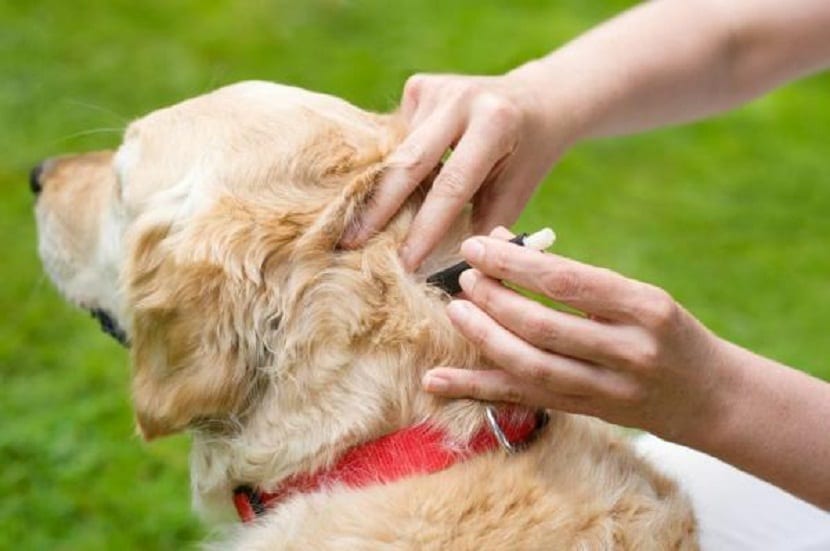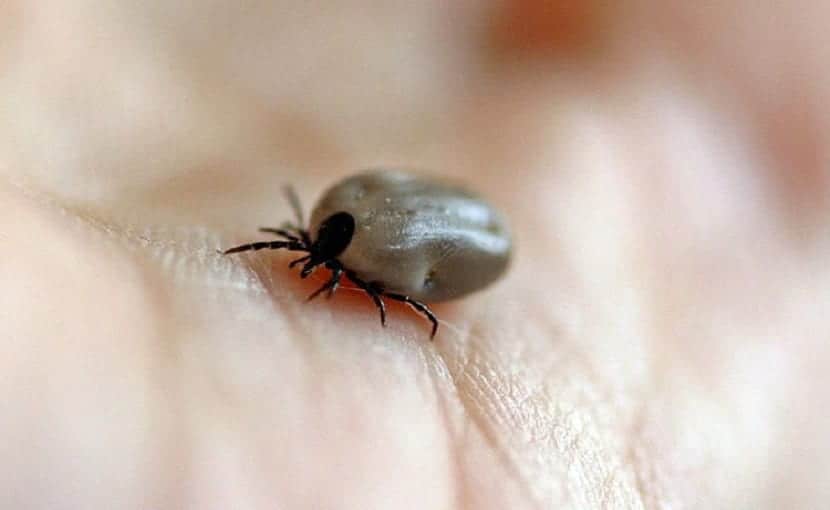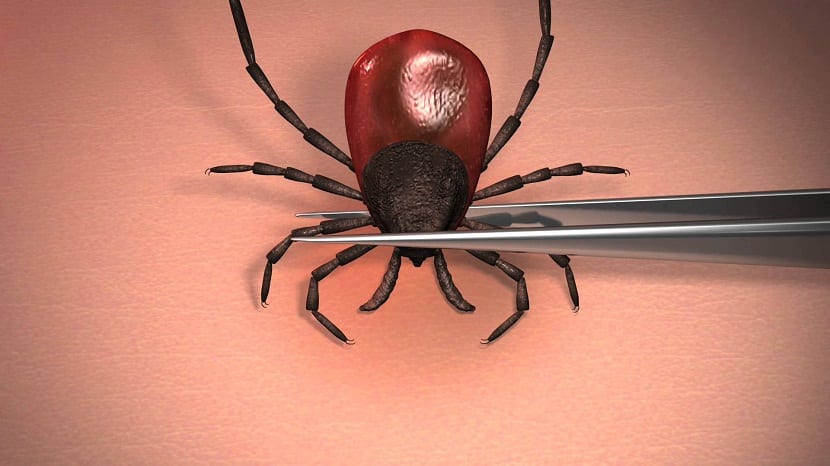
Having a dog can be one of the most rewarding experiences a human can have, but it can also be a Big responsibility. This is because, like us, dogs have needs that must be taken care of, one of them being hygiene and health.
While it is true that dogs tend to get dirty frequently, your dog's health depends on hygiene that they have. This is because, although the coat of dogs protects them, they also can be affected by parasites that cause disease.
Dogs are more likely to acquire different parasites, either cutaneous or internal. That is why it is important to always be aware of keeping your dog clean and noting if it has any external parasites.
But what are these parasites?

One of them are ticks, which are generally added to the skin of dogs and cats. These can spread and multiply very quickly, so your dog may suffer from serious diseases if they become embedded throughout your body.
If you want to know more about ticks, keep reading this article and find out about the different things you should know about them nasty parasites!
- Ticks, as we mentioned earlier, are parasites that they live on the blood of other animals. They have 8 legs and belong to the arachnid family
- Ticks they have 3 stages of growth. The first is the larval stage, the second nymph, and the third as an adult. In each of the stages the tick usually has a different host, from which it feeds on its blood. The tick generally found on deer is usually in the transition from larva to nymph.
- Ticks do not have the ability to jump from host to host. These are stimulated by humidity, vibrations and heat, so they can tell when a guest is around. To pass from one host to another, the ticks wait dormant, until they can walk through the hair strands.
- Ticks can be found anywhereeven in cold climates. For example, in the United States there are ticks in each of the states.
- Ticks withstand extremely low temperatures, being able to withstand up to 4 degrees Celsius.
- Lyme disease, anaplasmosis, and ehrlichiosis, are some of the three most dangerous diseases that can be caused by ticks, since they are transmitted by your dog's saliva and in just 4 hours.
How to remove ticks?

- First you need to find the head of the tick. In most cases, it will be buried under the surface of the skin.
- Apply hydrogen peroxide to the area.
- Remove the tick with tweezers, since with these you can pull the tick easily and everyone has one in their bathroom.
- Use fine-tipped tweezers.
- Grab the head of the tick and place the tweezers as close to the mouth as possible.
- Pull it firmly and without hesitation. Do not twist or twist the tweezers to pull it, as the dog's fur can pull when you are trying to remove it.
- Remove the tick with a piece of string or dental floss, running this around the tick's head and as close to its skin as possible.
- Pull the ends up and out in a slow, steady motion and voila, tick removed.
You be very aware of your dog's body, if you have a wound, sore or if you scratch very often somewhere. You should also notice if there are any strange black spots on the body, as these are probably ticks.
When bathing your dog, check it well and prevent it from suffering from diseases by these pesky parasites.